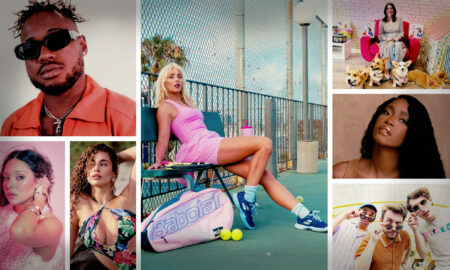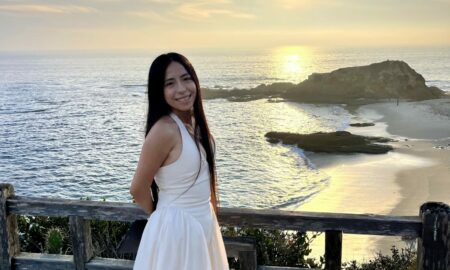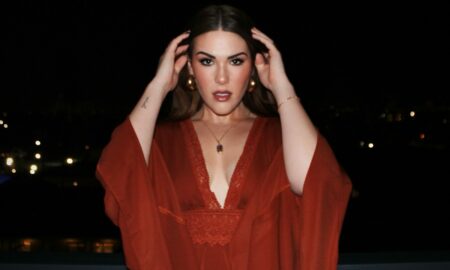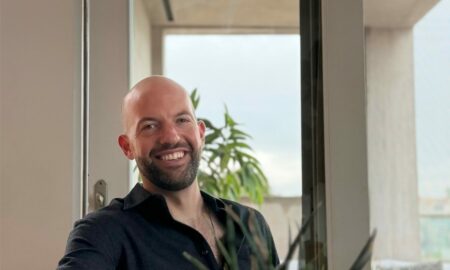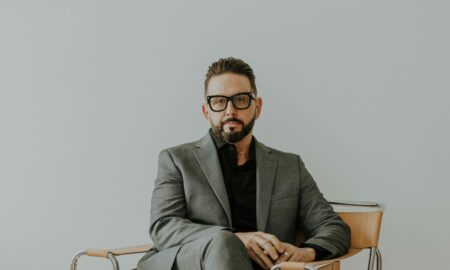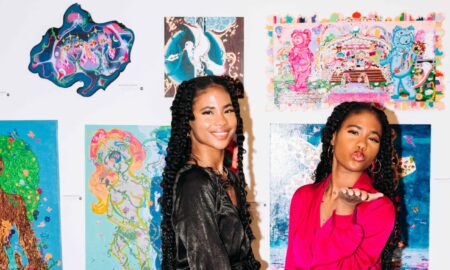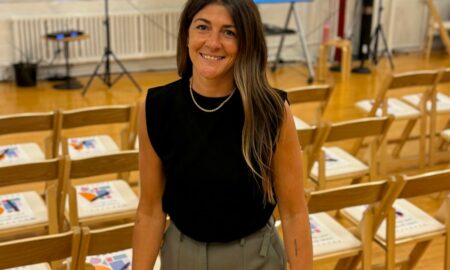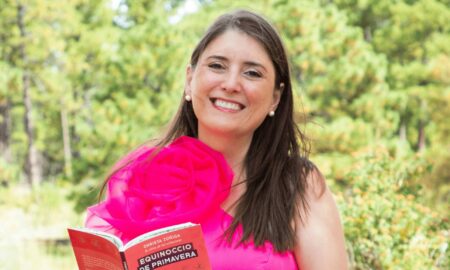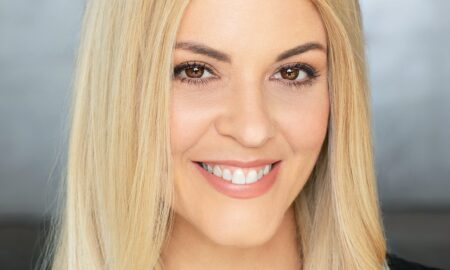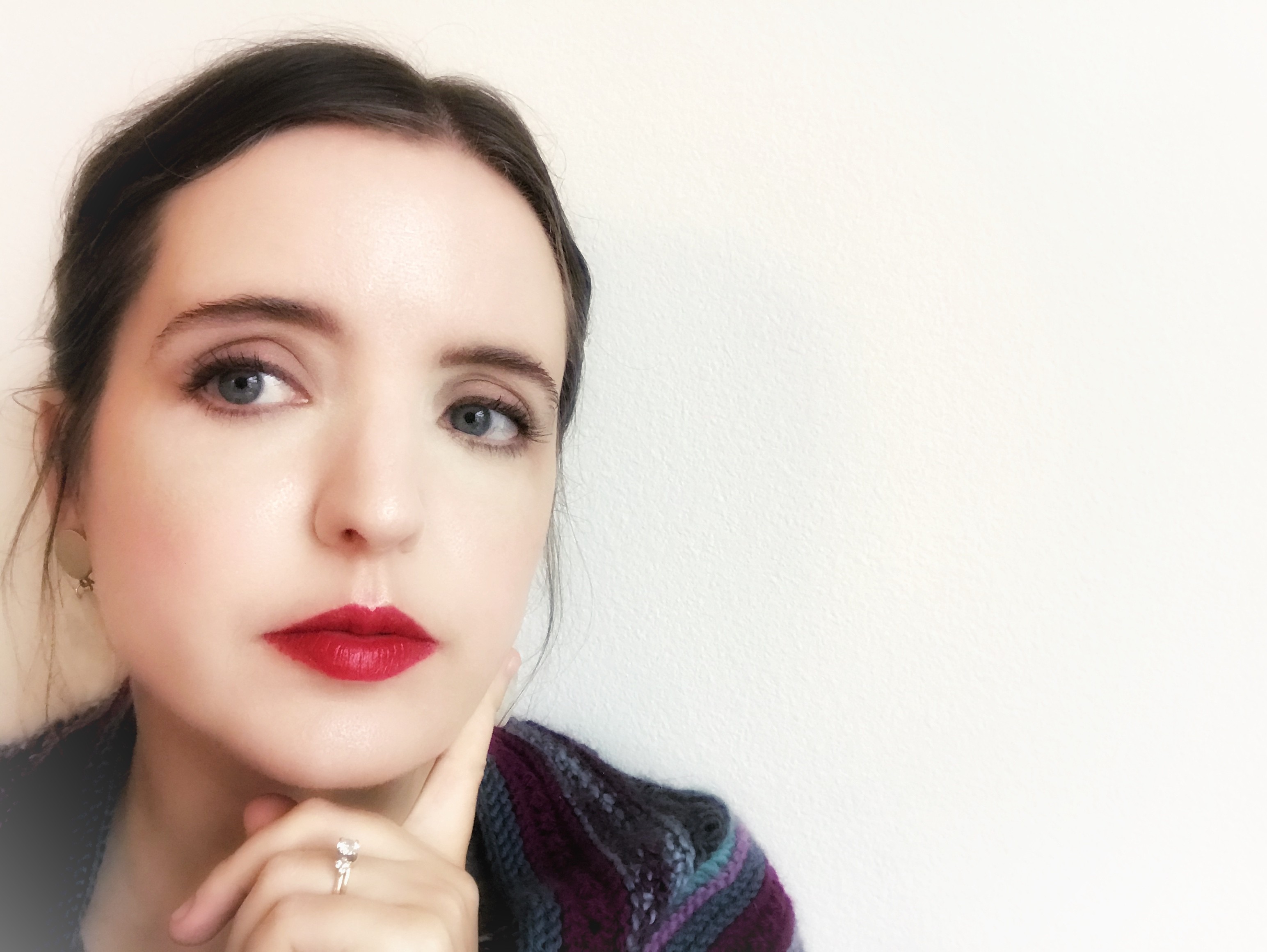
Today we’d like to introduce you to Erin Schalk.
Hi Erin, we’d love for you to start by introducing yourself.
My entire life has been what I call “semi-nomadic,” meaning I’ve found myself living across the continental United States, as well as in Okinawa, Japan. In my early twenties, my world shifted drastically in both wonderful and terrifying ways. I found myself married to the love of my life but also sent across the country, far from family and the home I had known. And each year, my husband was being sent away again and again — oftentimes overseas. Life would continue to catapult me far outside of my comfort zone, stretching me well beyond the tools that I had at my disposal. Art and restorative writing became two of my key coping strategies, providing generous places to process the full spectrum of emotions and fears. In time, I began to feel a magnetic pull toward teaching to share the benefits of a sustained, creative practice with others. I can trace the beginnings of my career as artist, writer, and educator to a steel blue Nissan Cube that I purchased in 2010 in Okinawa, Japan. For three years, that car was my lifeline (and portable classroom). Determined to continue this work despite the challenges at hand, I shuttled art and language learning supplies across the island, teaching students from ages 4 to 64. In 2014, I was living in the Dallas-Fort Worth (DFW) area of Texas and in the midst of graduate school. My eye doctor expressed concerns with swelling in my optic nerves, and I underwent a battery of tests which proved to be inconclusive. I’ve had a severe astigmatism in my right eye since birth, and this affects my work as an artist, primarily my sense and perception of space.
For example, when I took foundational drawing in college, my professor noted that everything I sketched slanted a bit to the right. Today, my eyes seem to be stabilized compared to 2014, for which I am incredibly grateful. My prescription is challenging, but I can wear hard contacts and glasses that do a substantial job to correct my vision. At the same time, these experiences have made me much more conscious of sight and seeing as an artist, including their role in making. And of course, I’ve asked myself the question numerous times, “What would I do as a visual artist if I lost my sight?” Jump to 2018, and my husband and I (along with our almost two-year-old son) moved from Texas to California for employment opportunities. Within our first year in CA, I was offered a teaching position at the Braille Institute of America in Anaheim. On a daily basis, I witness how the arts have great potential to inspire people of all ages, backgrounds, and circumstances. My students face continual daily challenges, including seemingly simple tasks sighted people take for granted such as navigating a busy street on foot. Time and again, I see the incredible resiliency of the human spirit through my students and their creative work, and I am privileged to learn from them every day.
We all face challenges, but looking back would you describe it as a relatively smooth road?
Goodness, no! My life thus far has demanded frequent relocations across the United States and overseas. With each move, there’s always been a struggle to establish myself in terms of my creative work and teaching. It takes time to meet new people, find or create a job, become familiar with new arts organizations, and uncover (or make) art opportunities in the local area. There are additional health struggles beyond my vision scare in 2014. Since being diagnosed a decade ago, I grapple with the effects and daily maintenance of two chronic, auto-immune diseases. It’s interesting because these health challenges are invisible; to meet me in person, I seem like someone who is quite ordinary and healthy. My personal health concerns have helped me gain greater insight into the experiences of my students at the Braille Institute with vision loss. A person who is blind or has low remaining vision often bears the markers of the condition, for example, wearing sunglasses and/or carrying a white cane. My students have shared their experiences with me, for example, instances where people will avoid sitting with them in a public cafeteria setting because of their blindness.
Other very scary scenarios include drivers who aren’t careful when turning at an intersection and pay little attention to a person trying to cross with a guide dog. This has prompted me to think critically about disability, different abilities, and unique abilities. Disability is a challenging concept to address in American society. I feel one of the aftereffects of the Industrial Revolution is a cultural fixation with “functionality,” and that philosophy often affects how we assign value to people. So many of us learn to subconsciously perceive people who are able-bodied, who can live independently and support themselves, to be superior to those who cannot. In this tunnel vision, I believe we lose sight of a great many strengths those with unique situations have, as well as important and powerful contributions they can make to society. In my work as an artist and educator, I’ve made a commitment to do my part to raise awareness and bridge the gap between the art world and disability. For example, I was stunned to learn from some of my adult students that they had never visited a museum (or art museum) in their entire lives because they struggled to find accessible museum exhibits. In the past two years, I’ve been reaching out to local arts organizations in Orange County to see who could accommodate a visually impaired audience. The Orange County Museum of Art has reached out to my students and provided a private tour of a tactile exhibition in 2019, as well as a virtual, accessible art exhibition tour in 2020.
In 2021, The Muckenthaler Cultural Center named me their Artist in Residence, and I am so grateful to be able to work with The Muck’s highly regarded fine arts programming to bring a series of art workshops and an art exhibition designed with accessibility in mind. In addition to my physical health, much of my struggles are also internal. Each day, I continue to learn to not be defined by any diagnosis or circumstance. I’m a firm believer that with every challenge, there’s innate strength and good hidden within. With any sort of health condition, there’s often a focus on pathology and problems, as well as a push to shore up the weaknesses that coincide with the diagnosis and/or to mask these challenges as best as possible. This is not in any way to minimize the challenges that come along with the varying shades and manifestations of disability. We need to provide those in need with what they need. It’s taken me time to understand and embrace the importance of widening the focus regarding the discussion of disability to seek out the inherent gifts and strengths that can come from a different outlook on the world, a sense that becomes heightened in a superhuman way because another was lost, a brain that’s neurologically unique compared to the mainstream but within that difference, brings incredible beauty and innovation. It’s taken so much metaphorical falling and skinning my knees, dusting myself off, hoisting myself back up on wobbly legs, moving forward, and making the decision that no statistics or diagnosis has to be the sole predictor of what I or anyone else is capable of doing. I strive to share that similar sense of empowerment with others through the vehicles of visual art, writing, and teaching.
Appreciate you sharing that. What else should we know about what you do?
For the past decade, I’ve referred to myself as an artist, writer, and educator. My visual artwork is varied; at the core, I consider myself a painter and create abstract paintings and drawings that frequently reference aspects of landscape. In 2014 while I was experiencing unknowns surrounding my eye condition, these paintings became highly tactile and sculptural; I would build up the surface of painting panels using everything from cast paper sculptures to wire armatures to highly tactile paint mixed with soil samples I had collected from different regions throughout the globe. In 2016, my art practice cracked open, and I began doing combinations of performances, video work, installation, and poetry. The surfaces of my painting panels were becoming so heavily wrought and layered, and it took a while for me to realize that I was striving to express the passage of time and multi-generational traumas. Once I made that realization, the expansion from 2-dimensional media into time-based media such as video and performance was natural — almost subconscious. (Examples may be viewed on my website: www.erinschalk.com).
Artwork narrative (paintings & drawings); “These paintings have grown from ten years of visual research in my many semi-permanent and temporary homes. During this period, I have collected hundreds of photographs of the California foothills, buttes in New Mexico, the Texas desert valleys, the subtropical landscape of Okinawa, Japan, and the moraines of my home states of Iowa and Wisconsin. The process of taking these images, as well as living in these diverse geographic and geological regions, have provided me with a wide variety of natural imagery. Consequently, these colors, textures, and shapes can be endlessly reconfigured in my mind, and by extension, on the painting panel’s surface. ‘Poetry of place’ – a personal philosophy that grounds this body of work – examines the symbiotic relationship that exists between humans and the land. In this era, we are becoming increasingly aware of how our interactions with the environment produce far-reaching, global repercussions. By extension, as individuals inhabiting various geographic regions, the unique features of that region impact a person’s preconceptions of the environment. In these paintings, I strive to record memories of place with increased sensitivity to the natural and manmade materials that I use, hoping to bring about harmony between both.”
I feel most fulfilled during any moment where I’ve been able to improve and enrich a person’s life through art, writing, or teaching — when students blossom and share newfound confidence in themselves and their talents, as well as a passion for their work. I am proud of those moments when I can help — through creative work — to provide students with opportunities to express themselves, to share their stories, and to discover or revitalize their creative talents. Art has incredible power to change lives for the better, and I am so grateful to be able to provide fine arts education to communities that wouldn’t otherwise have access. In addition to spending many years in higher education, I’ve also had to become an autodidact (self-taught) in a wide variety of areas. Frequent moves meant I often found myself in work and creative practice situations that required me to take on new skills and explore different areas of study.
For example, I work and teach as a visual artist, but I also taught myself how to learn a new language (Japanese while living in Japan). Higher education taught me to write academically, but I’ve also learned how to write magazine articles, non-fiction, poetry, short stories, and audio narration scripts. In the process of shifting to online teaching in 2020, I developed a wider toolkit for creating instructional videos, as well as doing video and sound editing from my home studio. Whenever I teach myself a new discipline simultaneously (and through trial and error), I strive to learn how to teach those skills and techniques to others. I remember a professor telling me that this multi-passionate nature was a liability and that I was casting “too wide of a net.” I disagree. Each of these past experiences — just like each location in which I’ve lived — has provided me with a valuable range of knowledge and new perspectives that can inform and enrich current and future projects.
Any advice for finding a mentor or networking in general?
During the times in my life when I was fortunate to have trusted mentors, I found them (or they found me) in a moment of need and a moment of raw authenticity and sincerity. For example, during part of my career as a student, my husband was active duty military and frequently sent across the world. I lived alone and hundreds of miles away from family or any sort of support network. I can’t fully express through words what a stressful, isolating, fear-filled time this was in my young life. Once I was able to open up about these challenges within a supportive cohort of fellow creatives and art faculty, I was so fortunate to have incredible professors who took me under their wings and guided me toward metabolizing these painful experiences through art. Regarding networking in general, I’ve found the most doors open when you’re truly, honestly passionate about what you do, as well as the benefits your work can bring to others. Again, it’s about authenticity. It’s about being a person of increase. We’ve all been placed on this planet to fulfill a particular mission and offer a unique gift to the world. I’ve found that when you’re as aligned with that calling as possible — not striving and scrambling to fulfill the dreams others have for you or the mainstream roles society expects you to play or what you think you’re supposed to do — your world finally bursts into technicolor. It’s exhilarating.
Contact Info:
- Email: [email protected], [email protected]
- Website: www.erinschalk.com
- Instagram: https://www.instagram.com/elschalk/
- Facebook: https://www.facebook.com/elschalk/







Image Credits:
All of the images provided belong to Erin Schalk.

